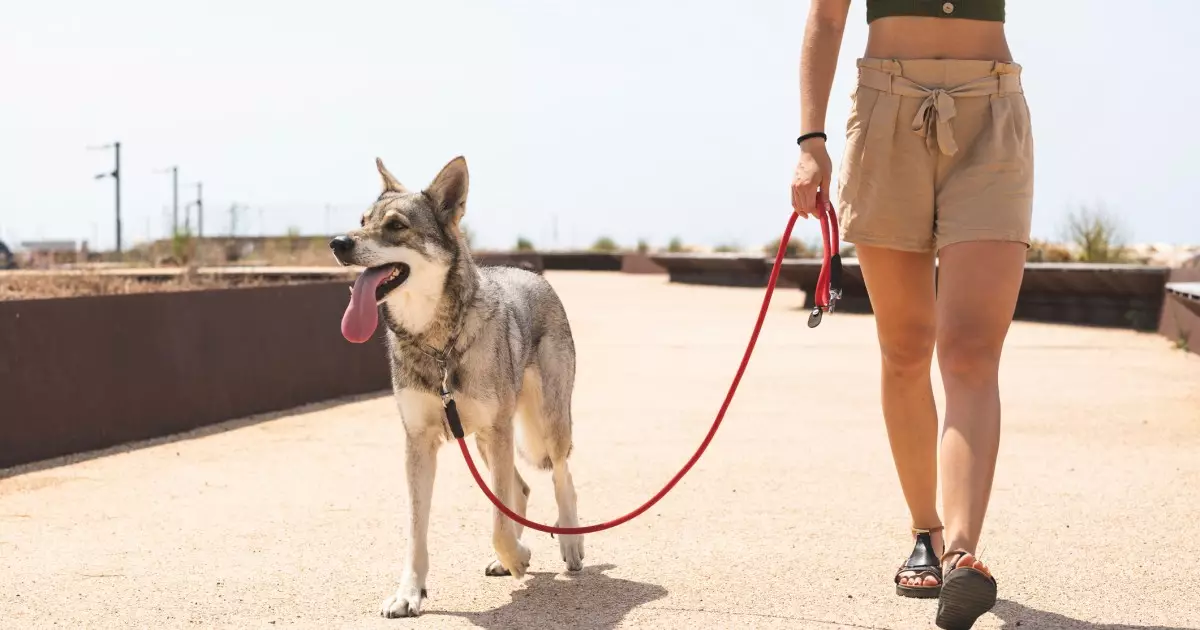Walking your dog is far more than just a routine chore; it plays a crucial role in nurturing a healthy relationship between you and your furry companion. Not only does it provide an opportunity for physical exercise, but it also fosters mental stimulation for both pet and owner. However, how you manage the leash and the positioning of your dog during walks can have a significant effect on the experience, influencing everything from obedience to the quality of your interactions.
At first glance, it may seem natural for a dog to walk in front of its owner, but this behavior can lead to a host of issues. Dogs pulling ahead are often motivated by the desire to explore their environment—sniffing out interesting smells or greeting other animals. This instinctual behavior, when left unchecked, results in what pet parents know all too well: a tug-of-war dynamic established through the simple act of walking.
When your dog pulls, it’s because it has learned that this behavior yields results. If they manage to dash ahead for a few feet and are rewarded with a fascinating new scent, they see this as a successful outing. This becomes a repetitive cycle where pulling reinforces the behavior, making it harder to control your dog’s enthusiasm during walks.
The Myths of Dominance
Many dog owners have been misled by outdated theories regarding canine behavior that suggest a strict emphasis on dominance—the so-called “alpha dog” theory. As tempting as it may be to view dog-human relationships through a lens of hierarchy, contemporary behavioral science paints a very different picture. Dogs do not have the same social structure as wolves, and relationships based purely on dominance can backfire, leading to anxiety and mistrust between owner and pet.
Modern dog training emphasizes the importance of cooperation rather than intimidation. By abandoning the combative mentality associated with dominance, pet owners can cultivate trust and a more enjoyable bonding experience with their dogs. When you walk together, your dog learns to view the activity as a shared experience, promoting cooperation rather than competition.
Training your dog to walk beside you can offer numerous advantages. First and foremost, it strengthens the emotional bond between you and your pet. When you engage in a cooperative walk, it fosters trust and communication. Your dog will learn to stay focused on you, responding better to commands and cues as a result.
Additionally, walking side-by-side allows for more effective supervision. Being physically closer enables you to easily redirect negative behaviors, ensuring your dog remains calm and composed amidst distractions. This proactive approach to training is vital for shaping a dog’s behavior in public spaces, which can often overwhelm even the calmest of pets.
Next, the position you choose during walks dictates the pace of your stroll. By guiding your dog to walk next to you, you can introduce commands like “heel” or “stay close,” integrating structured training into your routine. With the aid of treats and affectionate praise, you’ll create a positive framework that makes learning fun for both you and your pup.
It’s essential to remember that no two dogs are alike; each has unique needs and temperaments. Consequently, there’s no one-size-fits-all approach to dog walking. The true objective should be finding what best suits both you and your pet. Establishing a foundation of trust and communication using positive reinforcement can lead to a fulfilling walking routine tailored to your specific circumstances.
Walking your dog is both a physical activity and an essential opportunity for bonding. By understanding canine behavior and opting for a non-dominant, cooperative approach, you can enrich the experience for both you and your furry friend. Emphasizing trust, communication, and positive reinforcement will ultimately lay the groundwork for a harmonious, joyful walking routine—one where you stroll side-by-side, content in each other’s company.

